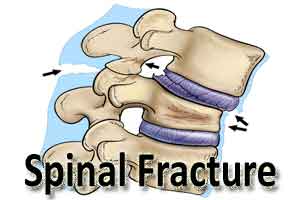- Home
- Editorial
- News
- Practice Guidelines
- Anesthesiology Guidelines
- Cancer Guidelines
- Cardiac Sciences Guidelines
- Critical Care Guidelines
- Dentistry Guidelines
- Dermatology Guidelines
- Diabetes and Endo Guidelines
- Diagnostics Guidelines
- ENT Guidelines
- Featured Practice Guidelines
- Gastroenterology Guidelines
- Geriatrics Guidelines
- Medicine Guidelines
- Nephrology Guidelines
- Neurosciences Guidelines
- Obs and Gynae Guidelines
- Ophthalmology Guidelines
- Orthopaedics Guidelines
- Paediatrics Guidelines
- Psychiatry Guidelines
- Pulmonology Guidelines
- Radiology Guidelines
- Surgery Guidelines
- Urology Guidelines
Percutaneous vertebroplasty offers hope in spinal fracture cases

New Delhi : For those suffering from painful spinal fracture and fed up with medicines and bed rest, percutaneous vertebroplasty offers a promising remedy, said doctors.
It's available in a large number of hospitals, can be performed quickly, and can relieve sufferers of their pain, said Srikant Sinde of neurology department at thed Ram Manohar Lohia Hospital here.
"The problem that 'percutaneous vertebroplasty' cures is called 'vertebral compression fracture' which means collapse of vertebra or one of the small bones that form the spine," he explains.
It may be due to trauma (injury) or due to a weakening of the vertebra. This weakening is particularly seen in patients with osteoporosis (decreased bone strength) or destruction of an area of bone due to a disease process.
Acute fractures will cause severe back pain. Compression fractures which develop gradually, such as in osteoporosis, may initially not cause any symptoms, but will later often lead to back pain and loss of height.
A lot of patients are advised rest and given analgesics (pain killers), but the problem may persist.
In 'percutaneous vertebroplasty', bone cement is injected though a small hole in the skin into a fractured vertebra, stabilising the fracture and allowing most patients to discontinue or significantly decrease analgesics and resume normal activity.
Pradeep Muley, head (interventional radiologist) at Fortis Healthcare, said: "In percutaneous vertebroplasty a small incision is made guided by a fluoroscope. Then a neuro-radiologist passes a hollow needle through the spinal muscles and into the fractured vertebra. X-ray cameras above, below and on the sides of the table provide guidance for needle placement."
"When the needle is in the correct position, bone cement is injected through the needle into the vertebra. The procedure takes an hour for each vertebra that is treated," said Muley.
"Percutaneous vertebroplasty decreases pain and eliminates the need for pain medication completely and in a much faster way," he said.

Disclaimer: This site is primarily intended for healthcare professionals. Any content/information on this website does not replace the advice of medical and/or health professionals and should not be construed as medical/diagnostic advice/endorsement or prescription. Use of this site is subject to our terms of use, privacy policy, advertisement policy. © 2020 Minerva Medical Treatment Pvt Ltd